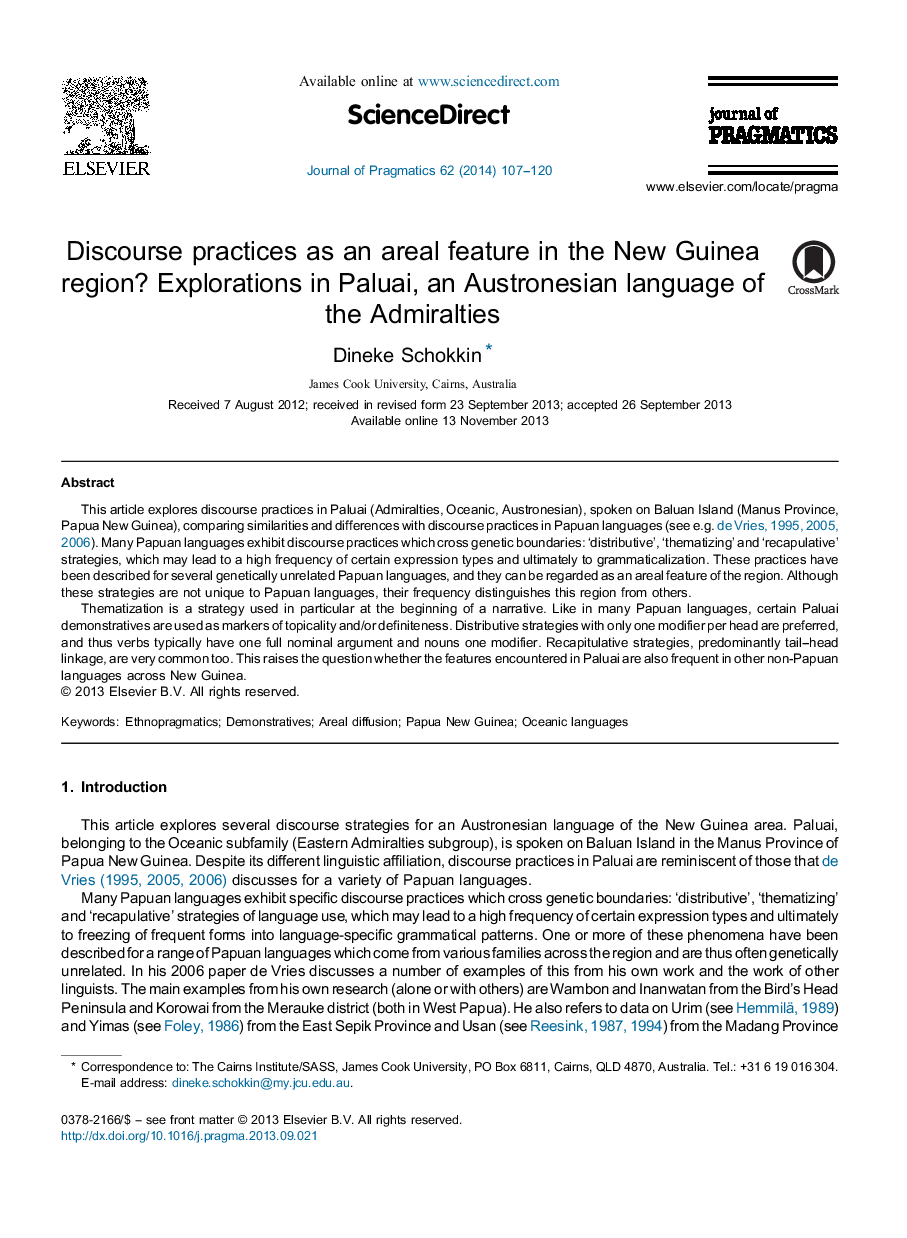| Article ID | Journal | Published Year | Pages | File Type |
|---|---|---|---|---|
| 932767 | Journal of Pragmatics | 2014 | 14 Pages |
•Discourse preferences in Paluai (Austronesian) similar to those of Papuan languages.•Both show grammaticalization of demonstrative form into topic marker.•Driving forces: culture-specific or universal cognitive constraints?
This article explores discourse practices in Paluai (Admiralties, Oceanic, Austronesian), spoken on Baluan Island (Manus Province, Papua New Guinea), comparing similarities and differences with discourse practices in Papuan languages (see e.g. de Vries, 1995, de Vries, 2005 and de Vries, 2006). Many Papuan languages exhibit discourse practices which cross genetic boundaries: ‘distributive’, ‘thematizing’ and ‘recapulative’ strategies, which may lead to a high frequency of certain expression types and ultimately to grammaticalization. These practices have been described for several genetically unrelated Papuan languages, and they can be regarded as an areal feature of the region. Although these strategies are not unique to Papuan languages, their frequency distinguishes this region from others.Thematization is a strategy used in particular at the beginning of a narrative. Like in many Papuan languages, certain Paluai demonstratives are used as markers of topicality and/or definiteness. Distributive strategies with only one modifier per head are preferred, and thus verbs typically have one full nominal argument and nouns one modifier. Recapitulative strategies, predominantly tail–head linkage, are very common too. This raises the question whether the features encountered in Paluai are also frequent in other non-Papuan languages across New Guinea.
